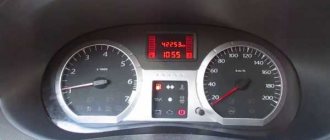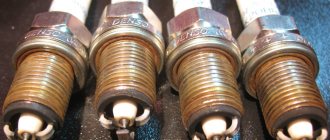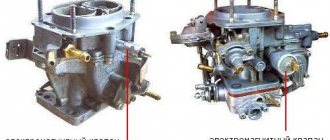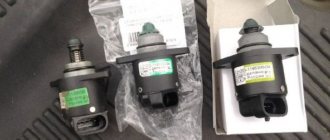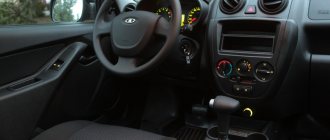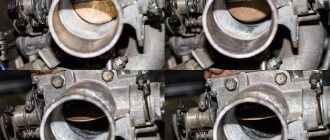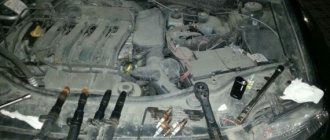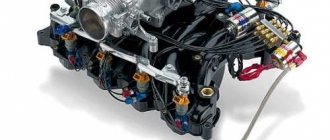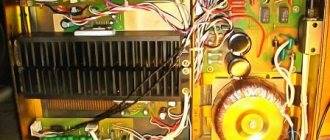Drivers often encounter such a problem as: the idle speed fluctuates, but after pressing the gas pedal everything goes away. This phenomenon occurs most often on cars with electronic fuel injection and less often on a carburetor. If such a phenomenon was noticed on your car, then you cannot do nothing in this situation. This can portend both small and serious problems. The main problem with this malfunction is that the driver must independently regulate engine speed using the gas pedal.
Causes
First, let's figure out how this happens. As an example, let's take a classic from a domestic manufacturer with a carburetor engine. In fact, there are a great many reasons why the idle speed fluctuates. The main reason that the speed of a carburetor engine jumps is due to the fact that the idle speed is incorrectly adjusted. It happens that the idle speed gets lost during the operation of the car. Most often, when the settings are lost, the fuel mixture becomes lean, which means that there is now more air than fuel in the fuel mixture.
When this problem occurs, the carburetor will need to be adjusted. You can do this either with your own hands or in a car service. Unfortunately, not everyone knows how to adjust the idle speed on a carburetor. In order to adjust the idle speed on the carburetor, you will need to remove the carburetor and wash it outside and inspect it for condition. It happens that people drive with broken carburetors, without even knowing it, they not only have a jump in speed, but also have many other problems.
After the housing has been checked for technical condition, you need to blow out or wash the filter and jets. This is necessary so that fuel can easily enter the cylinders. After this, you need to adjust the float chamber. It is needed to pump fuel into the carburetor body so that there is quick access to the fuel. If the float does not work, the car may not start at all or may run jerkily. Why this happens is clear even to a novice driver. The float chamber is adjusted according to the following algorithm. The first step is to check the geometry of the float and the condition of the bracket. If the fastener is bent, it must be straightened immediately. This is necessary so that fuel gets into the chamber in a timely manner.
After this, you need to start adjusting the starting system and idle mode. In order to make these adjustments, you need to remove the air filter, open the choke and start the engine. It should be noted that carburetor adjustment is carried out only on a well-warm-up engine.
The second reason why the speed jumps while driving on a carburetor engine is considered to be a failed solenoid valve. If your car can only work with the choke open, and when it is closed it stalls, then this is exactly the problem with the car. This problem is solved by replacing the solenoid valve.
The third reason, the most common one, is the problem of dirty jets. This refers to jets and channels through which fuel enters the cylinders, bypassing the throttle valve. This is called the idle system. The jets are constantly clogged due to the fact that the filters in the car’s cleaning system are clogged or simply are not there. Therefore, you need to periodically change all filters.
The fourth reason why the idle speed is low is that the carburetor is not configured correctly to mix the mixture. Most often in such a situation the fuel mixture is lean. This means that there is more air than fuel in the mixture. Due to the fact that more air gets into the mixture, the engine idles.
There are two more frivolous reasons that can be easily determined, but because of them, the idle speed is also low.
One problem is that there is not enough fuel in the chamber where the fuel enters before mixing with the air for the engine to operate properly. Adjustment will help get rid of this problem. The second reason is a clogged air filter. To get rid of this problem, you should resort to a regular replacement.
Carburetor speed fluctuates
You rarely see imported components on domestic cars. Basically, AvtoVAZ engines are equipped with a Solex or Ozone carburetor. Less often you can find products from the Dimitrovgrad Aggregate Plant, known for its reliability: the DAAZ carburetor. Drivers of relatively modern cars, accustomed to the check engine light, can easily determine any malfunction using an on-board computer or an inexpensive car scanner, but for veteran engine owners, only hardware diagnostics are available.
A common malfunction is idle speed floating, the main symptoms are:
- It would seem that the problem does not affect the speed - with intensive use of the gas pedal, the malfunction is invisible. However, it is dangerous in traffic jams, when the engine may suddenly stall, and when engine braking on a long descent;
- In addition, increased vibrations do not add life to the motor and attachments. Bearings of rotating shafts experience axial loads that are not typical for them. And it is uncomfortable for passengers to be in the car when the tachometer needle jumps from 500 to 1500 rpm.
The driver is forced to constantly apply gas, this distracts from the road and increases gas consumption.
So, manifestations of floating idle:
- The tachometer needle moves smoothly or sharply in the range of 1000 revolutions;
- The car shakes noticeably: there is always a feeling that it will stall;
- Pops of unburned fuel in the muffler and under the hood. In the first case, the mixture is rich, in the second, it is lean;
- Vibrations similar to tripping (at the same time you are sure that the spark plugs and the high-voltage part of the ignition system are in good condition);
- The motor randomly picks up speed, then smoothly reduces it. The problem is non-linear, it suddenly appears and also disappears suddenly (this somewhat complicates the diagnosis).
It is not difficult to localize the fault. If (we repeat: in the absence of other malfunctions), the speed fluctuates, look at the carburetor.
Problems with an injection engine
These types of breakdowns were typical for a carburetor engine. Unfortunately, the injection engine causes no less problems. Basically, they are all related to the fact that the sensors are damaged. The main control unit for the fuel injection system here is the ECU, but it simply cannot determine the required amount of fuel without the correct indicators.
In addition to incorrect indicators, there are several other reasons why the idle speed wanders on its own.
- Firstly, there are problems with the spark plugs that ignite the fuel mixture. They may be dirty, old, or simply unusable. When this happens, it is best to replace them with new ones. In fact, the process of replacing spark plugs is so simple that even the most inexperienced driver can handle it.
- Secondly, the mass air flow sensor may not work. Because of this, either more or less air enters the system than necessary. In this case, you need to clean the sensor if it is dirty, or replace it with a new one.
- Thirdly, the system can suck in air through other openings. This happens when the system is outdated and leaky. In order to fix this problem, you need to find this hole and seal it.
- Fourthly, the reason why the speed jumps during idle is damaged high-voltage wires. Such wires transmit current to the spark plugs. In this case, you just need to buy and replace the wires.
- Fifthly, malfunction of the idle speed controller. In this case, you just need to replace it with a new one.
- Sixth, the EGR sensor is faulty. Many will ask what it is and why it affects the speed when the engine is idling. The EGR sensor is designed to send some of the air for re-cleaning to reduce the release of harmful elements into the environment.
First of all, when the speed jumps while idling, you need to check the sensor and the device that regulates the idle speed. Finding it is not difficult; it is located next to the sensor that shows the throttle position.
Diagnostics must be carried out using a special device called a multimeter. If these parts are fully functional, then you should proceed to checking the mass air flow sensor. This can only be done by turning it off. If the revs stop moving, then the reason is really in it and it should be replaced.
Floating speed on cars with electronic fuel injection
Here, the cause of unstable idle is air leaks into the intake manifold through the joints of the manifold itself (typical of plastic manifolds), vacuum hoses, and so on. When looking for the reasons for the floating speed on an injection engine, you need to start working by eliminating air leaks, spilling “suspicious” places with a carburetor cleaner spray or other liquid. When liquid gets into a leaky area, it acts as a temporary plug, which immediately affects the operation of the motor.
And malfunctions of the throttle position sensor affect the stability of the idle speed, and the source of the problems is the same as for “mechanical” flow meters: abrasion of the potentiometer track. Moreover, engines with a mechanical throttle drive are free from this problem, since at idle it is stationary and the TPS contact does not move.
This is interesting: How to change the oil and oil filter in a Nissan Qashqai engine
On engines with an “electromechanical” (the damper drive is a cable, but the idle adjustment is carried out by a built-in servo drive that corrects the position of the damper) and an “electronic” throttle, at idle the throttle constantly moves within small limits, wearing out the TPS contacts. Only chokes with contactless sensors are free from this. The main problem is that such throttles are monoblocks, where replacement of one throttle position sensor is not provided - the throttle assembly has to be replaced.
Something else useful for you:
- Design and principle of operation of the crankshaft position sensor
- The main reasons why error P0016 occurs, diagnosing the error with a scanner
- What does code P0135 mean and why does error P0135 appear?
Diesel option
There is another type of engine. These are diesel engines; unfortunately, they are not ideal and can also become unusable. The main reason that the speed jumps while driving in this type of engine is that the fuel pump screw becomes covered with rust.
This can be avoided by periodically adding engine oil to the fuel tank. Even 200-300 grams will be enough. When there is oil in the tank, it will cover the pump blades with a protective layer and prevent them from rusting.
Perhaps this is the only reason why the speed on a diesel engine can fluctuate. If such a problem does occur in your car, you should first try adding oil to the tank. If after some time the problem does not go away, then most likely the pump or blades will need to be replaced.
The main reasons for unstable engine operation at idle
The main reasons why idle speed fluctuates are: wear of the piston group, EGR exhaust system, corrosion of turbine blades, or failure of the ignition system.
One of the most common causes is a clogged EGR valve. The EGR system is responsible for removing exhaust gases. A feature of its operation is the return of part of the exhaust to the combustion chamber from the exhaust manifold of the circulation system. EGR technology allows you to reduce environmental damage from exhaust and ensure complete combustion of fuel. The damage can be eliminated by replacing the valve or cleaning it (blowing it out).
The diesel version of the internal combustion engine is characterized by the formation of corrosion on the pump or moving turbine blades. The elements “stick” and stop performing their function. A protection option is active lubrication of metal parts.
Private practice has proven the effectiveness of adding motor oil (100 - 200 grams) to the fuel tank to lubricate the pump blades.
Wear of the piston and rings leads to a loss of compression ratio in the internal combustion engine. Compression is directly related to the tightness of the cylinder head. Wear of the gasket leads to etching of the air-oil mass, which is visually identified by drips on the engine block. This characteristic indicator is accompanied by interruptions in the start and operation of the internal combustion engine, and changes in stable idle speed.
A damaged gasket under the cylinder head can lead to catastrophic consequences for the engine - the flow of coolant into the crankcase, oil contamination and water hammer (when the geometry of the block changes due to overheating).
The reason for floating speed may lie in the operation of the spark plugs. Spark plugs are designed for a certain service life and need to be periodically checked and cleaned from carbon deposits. The service life depends on the quality of production of the spark plugs and the material used to make the electrode. Nickel-coated spark plugs do not last long. With a mileage of about 10 thousand kilometers, the operating mode is disrupted - a “wandering spark” occurs (leading to an unstable timing of fuel ignition in the combustion chamber). It is accompanied by difficult starting of the internal combustion engine and affects the smoothness of idle speed.
In addition to the spark plugs, the armored wires are inspected for integrity, and the ignition coil is inspected for winding short circuits.
The quality of the fuel mixture can be determined visually by the color and condition of the spark plugs: traces of overheating and slagging indicate low-quality fuel.
This is interesting: Decoding the car fuse box
Summary
Today, almost every person has one car. Unfortunately, this is a mechanism, and it tends to break. Breakdowns can vary, ranging from the simplest and most minor to problems that take a long time to repair. It often happens that the needle on the tachometer moves. This means that the engine speed is jumping. There can be many reasons for this.
First of all, in order to fix the problem, you need to know what kind of engine you have. Because each engine has its own characteristics. Having determined what kind of engine you have, you need to find out when the revolutions jump; they can jump during idle or when you press the gas pedal. Most often, the speed floats at idle, and when you press the gas pedal, everything goes away. Every driver will understand why this happens only when he fixes this breakdown. One way or another, when a mechanism in a car does not work or is not working properly, it needs to be fixed immediately. This is very important, otherwise it can lead to irreparable consequences.
Communities › DRIVE2 Audi 80 Club › Forum › speed is floating, reasons?
Hello everyone, please help) in general, the problem is that the engine ABC 2.0e 115 hp is floating, lately the speed has started to drop and stall while driving, I changed the idle speed control (idle speed sensor) in general it became normal (sort of) it still happens that the speed drops then they rise and this all happens quickly and for a long time, which could also be the reason for the floating speed, + on top of everything, the lambda is turned off, and the sensor on the temperature arrow does not show correctly, in general, tell me what other reasons could bother me?
air sucks... pollution... gasoline is poured...
Idle speed fluctuates. Causes
Almost all drivers of cars with injection engines are faced with such a problem as floating idle speed. The reasons for this malfunction are almost the same for all fuel-injected cars, so let's deal with them.
The reasons for the occurrence of floating speed at idle can be:
1. The idle speed controller is acting up.
2. EGR valve malfunction
3. A crack may form in the exhaust manifold or a gasket may burn out, which could result in exhaust gases leaking to the oxygen manifold.
4. The electrical wiring is faulty, there may be very poor contact in the connectors and sensors.
Also, the reasons for the occurrence of floating speed at idle (idle) can be quite simple:
1. The air filter has not been changed for a long time, as a result of which it is dirty.
2. The throttle is clogged with oil deposits and other dirt. This problem is solved as follows: The intake air duct is removed and washed with a product that is specifically designed for cleaning throttle valves.
3. In the same way, the idle speed control could become clogged with dirt. Therefore, remove it from the throttle and wash it. Also, wash the seat on the throttle and the regulator rod along with it.
4. Check the condition of the spark plugs.
Next, check for air leaks after the sensor, which is located behind the air filter. This is the mass air flow sensor.
1. Check whether the clamps on the inlet corrugated pipe are tightly tightened.
2. Check whether the rubber tubes are securely connected to the throttle assembly and whether they are connected at all.
3. Next, check if there are any defects on the tubes in the form of cracks, abrasions, severe kinks, etc. If there are any, then air that is not needed at all can be sucked in through them.
4. Check whether there are plugs on the service openings of the intake manifold and intake air duct.
5. Idle speed may float when you press the gas. If this happens, disconnect the vacuum hose from the vacuum brake booster. Plug the hole for now while checking.
6. The adsorber valve must be checked for suction. To do this, you can use pliers to pinch the rubber tube that comes from the adsorber.
If you still haven’t determined why the idle speed is floating using all of the above methods, then you might want to contact a specialist.
What's the result?
As you can see, the list of main systems and mechanisms that need to be checked in case of floating speed at idle includes:
- intake system;
- supply system;
- ignition system;
- gas distribution mechanism;
- exhaust gas recirculation system;
Each of these systems requires detailed diagnostics. It is also necessary to take into account that heavily contaminated injection nozzles or a break in their supply circuit can cause floating speed, loss of power, engine tripping, exhaust smoke, etc.
Finally, we add that in some cases, engine tripping and malfunctions at idle and under load are accompanied by the fact that a “check” lights up on the dashboard. Note that fixing the error and recording the fault in the ECU memory can make troubleshooting easier. To determine the failure or malfunction of a particular sensor, it will be enough to connect a special scanner to the vehicle’s diagnostic connector to read error codes and then decipher them.
Adjusting idle speed on carburetor and injection engines. Features of adjusting the XX carburetor, adjusting the idle speed on the injector.
Purpose and principle of operation of the idle speed sensor (regulator). Symptoms of malfunctions of the idle speed sensor, checking and calibrating IAC.
Why the engine may have high idle speed. The main reasons for high idle speed on an injection engine and engines with a carburetor.
Lifan X60 5 doors. crossover, 128 hp, 5 manual transmission, 2012 – 2020. — engine speed jumps at idle
content .. 258 259 260 ..Engine speed jumps (floats)
Floating idle speed is a fairly common malfunction on various cars. The revolutions fluctuate on gasoline cars and diesel units, as well as on engines with gas equipment. Note that the idle speed on gas or gasoline fluctuates quite often due to third-party incorrect ECU firmware. While driving, this problem can cause a lot of inconvenience, since the driver is forced to constantly apply gas to prevent the engine from stalling at the most inopportune moment. Next, we will look at why the engine speed jumps at idle, as well as how to determine the cause of the problem for further elimination.
Unstable idle speed: reasons
Normally, idle speed on different engines can fluctuate in the range from 700 to 900 rpm. It should be taken into account that immediately after starting a cold internal combustion engine, the control unit increases the idle speed, forcing the engine to operate in the so-called “warm-up mode”. This mode is normal, that is, it is not a malfunction. After reaching a certain temperature and slightly warming up the engine, the “warm-up” speed drops, and the engine begins to operate in normal idle mode.
If the engine speed jumps at idle, then this malfunction looks like lightly pressing and releasing the gas pedal, and the driver himself does not press the accelerator. In other words, the idle speed may be too high or normal, then begin to drop to the point where the engine almost stalls. After this, the engine “picks up” again, the needle on the tachometer rises again and the jumps in the form of increasing and decreasing speed are repeated. Typically, the malfunction appears for several minutes, often on a cold engine, after which it disappears until the next start. It is also possible that the breakdown is present constantly and regardless of the degree of engine warm-up, that is, the speed constantly fluctuates after the gas pedal is released and the internal combustion engine switches to idle mode.
There are many reasons for such unstable idle. Among them there are several main ones. First of all, it is necessary to take into account the type of engine installed and its power system: carburetor, injector, diesel engine.
On engines with a carburetor, most problems are solved by cleaning and adjusting the specified metering device.
The engine idle speed on the carburetor must be adjusted, since the settings tend to get lost during active operation of the vehicle. You should also pay attention to ensure that the fuel-air mixture does not become significantly depleted in the carburetor. The carburetor solenoid valve deserves special attention. A characteristic sign of its breakdown is the engine’s refusal to idle without choke. It is also necessary to exclude the possibility of air leaking into the carburetor, which can also greatly lean the mixture. As a result, the engine stalls, the speed jumps, and the engine begins to stall. When manipulating the carburetor, you should check the degree of contamination of the jets, clean the idle passages, assess the fuel level in the float chamber, etc. The ultimate goal is a normal supply of air and fuel to the carburetor, as a result of which the mixture composition will be optimal for the idle mode. During operation, carburetor jets require periodic cleaning; at the same time, you need to check the condition of the air filter and replace a heavily contaminated element.
Now there are several reasons why the speed jumps on an injection engine. As you know, modern cars with such an engine are equipped with electronic fuel injection controlled by the ECM. Such a control system is structurally equipped with many sensors, thanks to which the composition of the fuel mixture is determined in different operating modes of the internal combustion engine. It is quite obvious that failure or erroneous data from any sensor can lead to floating idle speed. In other words, the electronic control unit (ECU) does not receive reliable information or receives data intermittently, resulting in the speed jumping at idle. The list of possible malfunctions should include:
Ignition and problems with this system. It is necessary to check high-voltage wires, spark plugs and other elements. Inlet. Malfunctions in the intake may be associated with the mass air flow sensor, a dirty air filter, or air leaks. Idle speed regulator. Failure or malfunction of this device naturally leads to unstable engine speed at idle. Exhaust gas recirculation system USR. Problems with EGR cause disturbances in the composition of the fuel-air mixture, which also affects the stability of engine speed. If the speed fluctuates at idle, then checks should begin with the IAC. The location of the regulator is usually the area next to the throttle position sensor TPS. You can check the specified device by replacing it with a known good one or using a multimeter. To check with a multimeter, you should find out the operating resistance, and then measure the resistance of the regulator with a tester. Deviations from the norm will indicate a possible breakdown of the idle air regulator.
If the regulator diagnostics show its operability, then the test should be continued. The next element is the mass air flow sensor DMRV. To check, you should disconnect the power connector from the mass air flow sensor, after which you need to start the power unit. In idle mode, the speed can rise to about 1200-1500 rpm. Stable operation of the internal combustion engine with the mass air flow sensor disabled and improved acceleration dynamics while driving will indicate that the speed may fluctuate due to problems with the mass air flow sensor.
As for the EGR valve, this solution allows some of the exhaust gases to be returned back into the intake. This was done to improve the environmental performance of the internal combustion engine. In other words, the valve opens and then closes the passage to send exhaust back into the engine. Failure or “sticking” of the valve leads to excess exhaust gases entering the intake, affecting the mixture composition, idle speed and other engine operating modes. For normal operation, the EGR valve must be cleaned periodically, especially its seat. A diesel engine is structurally different from a gasoline engine in that it contains a fuel injection pump. For this reason, floating idle speed can occur both as a result of problems inherent in gasoline analogues, and as a result of problems with the high-pressure pump. For example, corrosion or mechanical wear of moving elements inside the pump. Jams and other failures lead to the idle speed of a diesel engine jumping.
The list of main systems and mechanisms that need to be checked in case of floating speed at XX includes:
-intake system; -supply system; -ignition system; -gas distribution mechanism; -exhaust gas recirculation system;
Each of these systems requires detailed diagnostics. It is also necessary to take into account that heavily contaminated injection nozzles or a break in their supply circuit can cause floating speed, loss of power, engine tripping, exhaust smoke, etc.
For this reason, the injector must be promptly cleaned of contaminants (every 30-40 thousand km traveled) by washing or removing deposits in an ultrasonic bath. You should also pay attention to the performance of the fuel pump and the pressure it creates in the fuel rail. Contamination of the fuel pump mesh is a common cause of unstable engine operation, jumping speed and other malfunctions. Finally, we add that in some cases, engine tripping and malfunctions at idle and under load are accompanied by the fact that a “check” lights up on the dashboard. Note that fixing the error and recording the fault in the ECU memory can make troubleshooting easier. To determine the failure or malfunction of a particular sensor, it will be enough to connect a special scanner to the vehicle’s diagnostic connector to read error codes and then decipher them.
Specifications
Technical characteristics of Lifan X60 / Lifan in a body of 5 doors. crossover with a 128 hp engine, 5 manual transmission, produced from 2012 to 2015.
Basic data
- Start of production:
January 2012 - End of production:
January 2015
- Body:
5 doors crossover
Engine
- Fuel brand: gasoline
- Engine capacity, cubic meters see: 1794
- Valves per cylinder: 4
- Power, hp: 128
- Achieved at vol. per minute: 6000
- Torque, Nm/rev. per minute: 168/4200
- Maximum speed, km/h: 170
- Acceleration time to 100 km/h, sec.: 11.2
- Fuel consumption (combined cycle), l. per 100 km: 8.2
- Power system: distributed fuel injection
Drive unit
- Drive type: front
Transmission
- Transmission: Manual
- Number of steps: 5
Suspension
- Front: McPherson
- Rear: Independent, three-link
Brakes
- Front: Ventilated disc
- Rear: disc
Dimensions
- Length, mm: 4325
- Width, mm: 1790
- Height, mm: 1690
- Wheelbase, mm: 2600
- Front wheel track, mm: 1515
- Rear wheel track, mm: 1502
- Ground clearance, mm: 179
Other
- Number of seats: 5
- Tire size: 215/65 R16
- Curb weight, kg: 1330
- Permissible weight, kg: 1705
- Trunk volume, l: 405
- Fuel tank volume, l: 55
- Turning diameter, m: 10.8
content .. 258 259 260 ..

